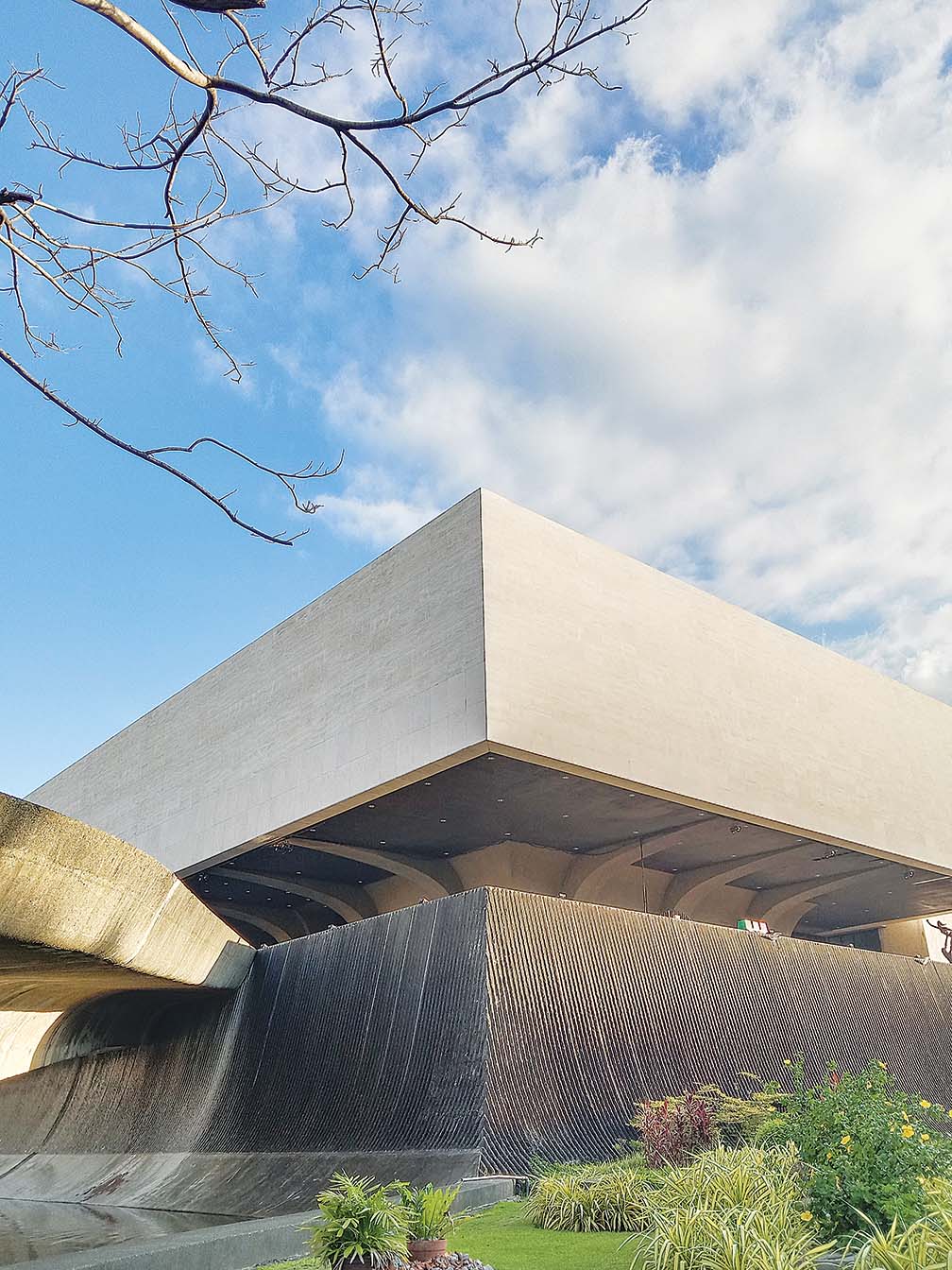‘To be at par with theaters worldwide’
It has been 53 years since the Cultural Center of the Philippines (CCP) first opened its doors to the general public. Since then, it has become the premier venue for the visual and performing arts.
By the start of next year, however, the CCP’s Main Building will be closed for two straight years as the venue undergoes a long-anticipated rehabilitation that includes major improvements to its theaters and indoor venues.
The rehabilitation plan emanated from a comprehensive building audit that started as far back as 2017.
According to Engr. Debbie Ponteras, head of CCP’s Maintenance and Engineering Division, the engineering consultancy firm, A.C. Ong Consulting, Inc. was hired by the CCP through public bidding to do the rehabilitation work.
A.C. Ong Consulting will be in charge of the audit and the checking of the mechanical, electrical and sanitary aspects of the building. More importantly, it shall look into possible structural defects.
MAJOR FACELIFT
In an earlier statement, CCP chairperson Margie Moran-Floirendo revealed how the building audit “diagnosed the extent of repair needed.”
“The evaluation of the data gathering indicated that there are problems with multiple-site damages such as leaks, corrosion and structural weaknesses brought by water seepage, earthquakes and fatigue. Further, we have to update the Center’s fire protection, environmental protection and other building codes,” Moran-Floirendo pointed out.
Although the venue’s rehabilitation is considered as a “major facelift,” Ponteras assured Philippines Graphic that while the CCP will indeed have significant improvements, the iconic appearance of the CCP’s exteriors and interiors will pretty much remain intact.
The work to be done in the next two years as explained by Ponteras are mostly retrofitting works.
By definition, retrofitting essentially means the addition of features or technologies that will improve and further strengthen an otherwise older structure. What’s going to happen in this case is that the CCP will undergo significant under-the-hood improvements without necessarily changing the appearance of its well-loved venues.
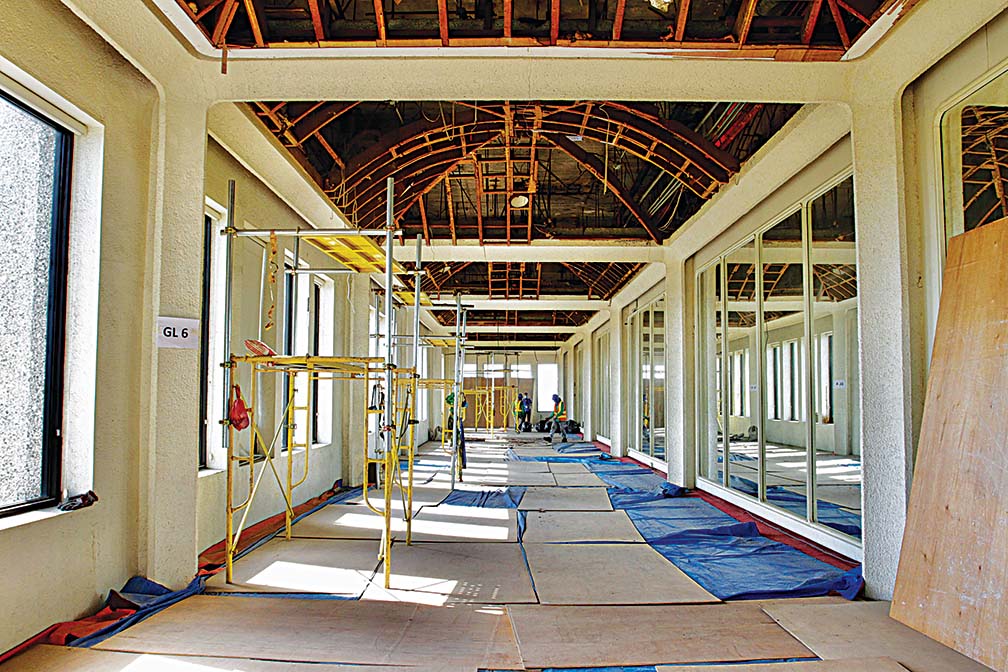
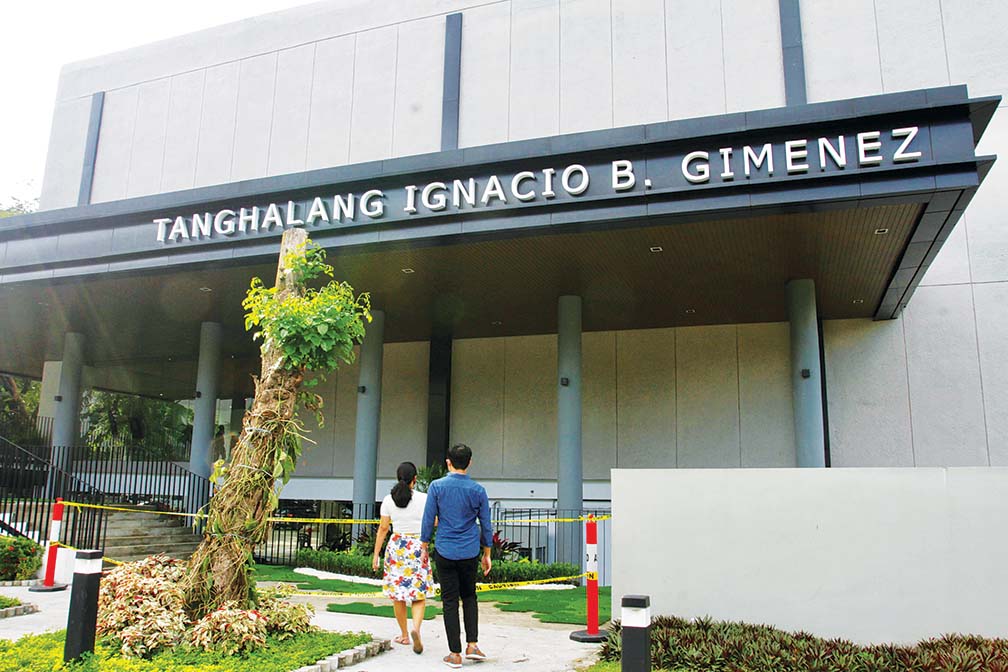
EARLY CRITICISM
Officially inaugurated in 1969, the CCP and by extension, the sprawling complex named after it, is now easily one of the country’s most recognizable landmarks.
Designed by the late National Artist for Architecture Leandro V. Locsin, the concrete building houses four theaters, a museum, a library of Philippine art and culture and hallways that are often used as galleries for art exhibits. Among its distinguishing features are its marble façade and the large lagoon fronting the main entrance that mirrors the building by day and illuminated by a big fountain when performances take place at night.
Established as a venue to promote arts and culture in the Philippines, the CCP was not without its share of critics, even during its infancy.
A brainchild of former First Lady Imelda Marcos, who envisioned it to be similar to the prestigious Carnegie Hall in New York, it was created in 1966 through Executive Order No. 30 by her husband and former President Ferdinand Marcos.
One of its most vocal critics was the late opposition leader and then Senator Benigno “Ninoy” Aquino who questioned the use of public funds in building what he branded as an institution for the elite.
MUSIC, THEATER, DANCE
But while the CCP did attract a good number of elite and world-class talents that included pianist Van Cliburn, opera singer Placido Domingo and the Bolshoi Ballet, to name just a few, the institution also gave equal prominence to local, homegrown talents, including indigenous artists.
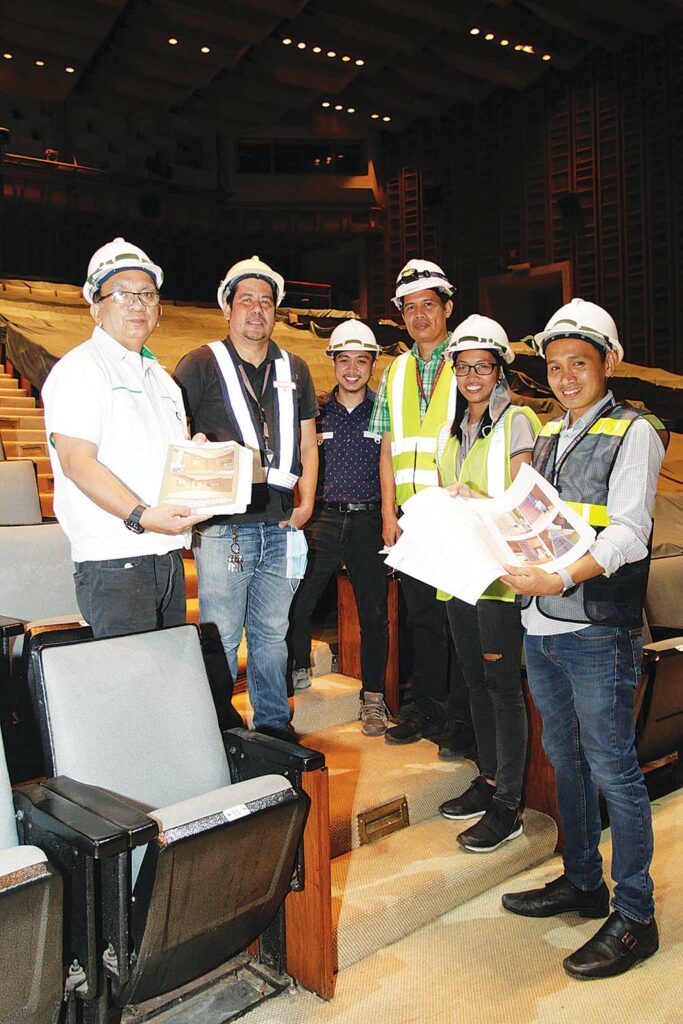
The CCP bore witness to Filipino artists that soared to greater heights including
classical pianist Cecile Licad who headlined several well-received concerts at its
Main Theater and acclaimed musical theater performer Lea Salonga who, as a young
child, headlined Repertory Philippines’ acclaimed production of “Annie” and would
later return triumphantly to the Main Theater with the Manila staging of “Miss
Saigon.”
The now defunct Teatro Pilipino, founded by the late National Artist Rolando Tinio, was a resident theater company that staged Filipino translations at the Little Theater (now Tanghalang Aurelio Tolentino) of the classic works of William Shakespeare, Tennessee Williams, Anton Chekhov and Henrik Ibsen, among others. Bulwagang Gantimpala, now known as Gantimpala Theater Foundation, staged original Filipino plays in a more informal venue. A much later theater group, Tanghalang Pilipino, focused more on productions that are rooted in centuries old Filipino culture and tradition.
The CCP currently has four resident dance companies: Ballet Philippines, Philippine Ballet Theatre, the Ramon Obusan Folkloric Group and the Bayanihan Philippine National Folk Dance Company. Classical music is represented by the Philippine Philharmonic Orchestra, the UST Symphony Orchestra, the Philippine Madrigal Singers, and the National Music Competitions for Young Artists Foundation (NAMCYA).
FILM, VISUAL ARTS
In recent years, the CCP has also become the home of two anticipated annual events, the Cinemalaya independent film festival and the Virgin Labfest, a laboratory festival of new plays by emerging and established Filipino playwrights. In over 50 years of activity, the CCP has produced shows that transcended social classes and increasingly appealed to a cross-section of society.
Aside from the performing arts, the CCP is also a sought-after venue for the visual arts and has constantly hosted numerous art exhibits featuring the works of the country’s top artists, either in its Main Gallery or in the hallways of the Main and Little theaters.
It is pretty much understandable then that any structure brimming with so much activity in a span of over five decades will certainly have more than its fair share of wear and tear. But even as the CCP’s coming two-year closure suggests that major repair works are very much necessary, the main building’s overall condition is remarkably stable.
“When the CCP was built in 1969, they used good construction materials. Even 50 years later, the building has no major structural problems even with major earthquakes and other natural phenomena we have experienced,” noted CCP administrative manager Teresa Rances.
P950 MILLION
The CCP’s rehabilitation project is made possible through the CCP Board of Trustees through the Ad-Hoc Committee on Renovations. The effort is led by trustees Stanley Seludo and Marivic del Pilar, and the Office of the CCP President.
The Administration Services Department (ASD) is tasked with overseeing the whole project. It will work closely with the project management firm of Oscar R. Ruivivar and Associates and the construction company, Vista Green Builders.
The entire rehabilitation project for the CCP will have a total cost of approximately P950 million. Of this amount, P440M has already been earmarked for the first phase while the remaining P515M is intended for the second phase and will include the renovation of the hydraulic pit, the freight elevators, light and sound systems for the theaters.
For its first phase, the rehabilitation project of the CCP Main Building also known as Tanghalang Pambansa begins at the fourth floor, roof deck and the Tanghalang Aurelio Tolentino or CCP Little Theater).
“The priority right now is the Tanghalang Aurelio Tolentino. When we installed the new escalators [a few years ago], from the ground to the top floor, we realized that the flooring of the Main Theater lobby escalators is directly connected to the ceiling of the Little Theater backstage. We need to repair the ceiling,” Rances further shared.
Ponteras and his entire engineering and maintenance staff took the combined team of Philippines Graphic and BusinessMirror on a tour of the ongoing rehabilitation process. Our first stop was the Little Theater. As Ponteras earlier mentioned, the main focus of the repairs will be on “structural retrofitting but at the same time will also include electro mechanical restoration.”
He noted that while the CCP had undergone partial renovation works over the years, this is actually its first rehabilitation project on a comprehensive scale, that necessitated the total closure of the main building.
Rances added that many of the earlier renovations have been done as recently as during the height of the COVID-19 pandemic. These include changing the centralized air-conditioning system from a single 350-capacity unit to six units of 60-ton cooling units. Glass window panels were replaced, as well as carpets and marble trims. The fountain has been refurbished and pretty much back in its familiar glory. Nozzles and fixtures were repaired, and lights were replaced with LED lights. Likewise, the CCP’s massive chandeliers have undergone rehabilitation as well.
STRUCTURAL RETROFITTING
“We have started upgrading our mechanical, electrical, plumbing and fire system. We will also start the structural retrofitting. We start with what we can with the budget that we have,” she further pointed out.
During our ocular visit, Ponteras and his team took us to the fourth floor where the Silangan function hall is situated. This is the area where training seminars and other programs of the theater operations take place. Everything from the ceiling to its existing electrical, mechanical and waterproofing systems will be replaced. The carpet will also be replaced while parts that are leaking as well as damaged flooring will be repaired.
Up next was the main building’s roof deck where waterproofing works are also scheduled along with repairs to damages that sometimes cause leaks during heavy rains.
Ponteras mentioned that similar retrofitting works will be done with the Main Theater (also known as Tanghalang Nicanor Abelardo) during Phase 2 of the CCP’s rehabilitation project, which will most likely start by 2024.
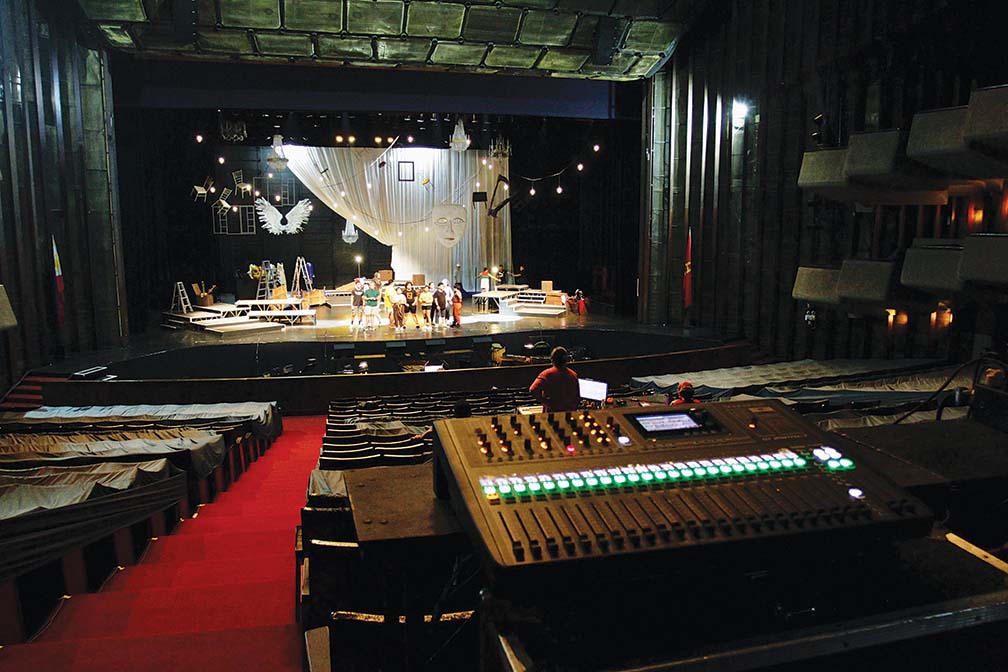
Other planned improvements include the construction of a new outdoor cistern tank at the South Parking area to supply water to the Main Building and the nearby Production Design Center (PDC). It will also supply water to the Fire Protection System, which will be built side-by-side with the cistern tank that will also generate water for the sprinklers even as a foam-type fire system has been installed in areas where artworks are located to protect CCP’s valuable assets.
CCP BLACK BOX
While the CCP closes the doors of its main building to the general public, the institute will continue to stage new shows at its brand-new venue, the Tanghalang Ignacio Gimenez also known as the CCP Black Box Theater.
Inaugurated only last Sept. 8, it will be the home of current and upcoming productions such as CCP Special Concert Series, Tanghalang Pilipino’s Anak Datu, CCP Triple Threats Series, Ang Dakilang Teatro ng Daigdig, Carousel and Ternocon.
A stone’s throw away from the CCP Main Building, the Black Box is located on the corner of Jalandoni and Sotto Streets. It is a three-level structure with a flexible theater expanse that can be adjusted to artistic and technical needs of live productions of concerts, recitals, plays, and other live events, such as arts conventions, workshops, and exhibitions.
The spanking new theater boasts of at least four flexible stage and seating configurations, a removable trap door, a portable dance floor, and a high-end sound and light technology system.
Among its impressive features is a catwalk that offers provisions to accommodate lighting, sound, video equipment, and additional drapery. The theater also has various orchestra and choral risers, as well as aluminum trusses, which can be used for rigging stage sets and designs. The loading dock can accommodate a 20-foot container truck. A carpentry area with a high ceiling can accommodate tall scenic pieces. An acoustically treated door separates the Carpentry Area from the Performance space.
Businessman Ignacio Gimenez, once a scholar of the late National Artist for Theater Wilfrido Ma. Guerrero, to whom the theater is named after, generously donated the building to CCP to honor his mentor.
Gimenez said it was his way of giving back to the Filipino people and also to encourage local business community leaders to engage more in Philippine theater. Together with his brother Roberto Olanday, the funding for the construction of the Tanghalang Ignacio Gimenez was made possible.
The building took three years to finish with the support and administrative assistance of the Leandro V. Locsin Partners. The groundbreaking ceremony was held in January 2016 and construction of the building commenced in 2017.
SOURCE OF PRIDE
Even as the Tanghalang Ignacio Gimenez fills a void for CCP habitues and patrons of the performing arts in general, the CCP will continue to explore other venues for its other productions, notably Cinemalaya and the Virgin Labfest, both of which have drawn a solid, loyal following over the years.
But while the general public will be equally excited to see CCP productions take place in other venues, the re-opening of the iconic Main Building—restored back to its old glory, enhanced and modernized with today’s technology is something everyone will be fully anticipating.
For CCP president Arsenio “Nick” Lizaso, the CCP is “a source of pride for all Filipinos, and a showcase of the best of the Philippine arts and cultures.”
“The Filipino audience deserves a national center of culture where they can enjoy the arts in comfortable surroundings redesigned for the times. Our artists need new and better stages and venues to showcase and display their talents and abilities. We need venues that can fit more modern productions, as well as globally-competitive staging facilities and equipment. We need training facilities for our actors, dancers and other performers,” Lizaso said in underscoring the importance of CCP’s rehabilitation.
Moran-Floirendo who has initiated a fund-raising project in order to fully meet the staggering cost of the renovation, echoes Lizaso’s sentiments.
“In the end, we aim to be at par with theaters worldwide, in terms of technology, space and content. A country’s theater is a landmark. The CCP is the home of the Filipino artists, and it should be a tourist destination. For the artists and cultural workers, the wish list is long. Work and rehearsal spaces are needed. But with the rehabilitated building, we can be at least assured that the structural health of the building will last fifty more years,” Moran Floirendo concluded.

